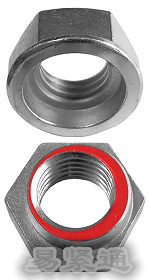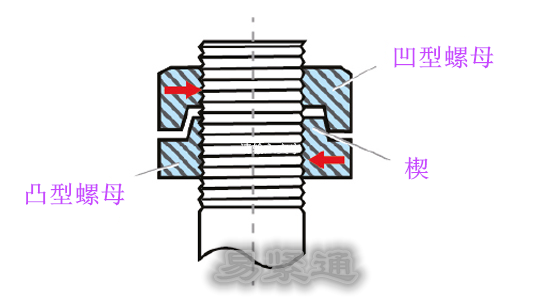When we use fasteners, we don't want it to fall off. Unless we choose to use a lock nut, the shedding will still occur from time to time. So why is it that in some cases an ordinary nut does not function properly? If a nut is difficult to install, it is more difficult to let it fall off. In most cases, this is beyond doubt. However, the torque that makes the fasteners more secure does not offset all the forces that might loosen the fasteners. Once the torque is cancelled, shedding is only a matter of time. There are many factors that adversely affect fastener performance, such as bending force, corrosion, hydrogen embrittlement, joint movement, force, steep shock load, extreme temperature, and vibration. How to control these negative effects has long plagued people. The lock nut is therefore used because it is specifically designed to prevent loosening. It has long been recognized that a safe way to ensure a safe combination of bolts is to use a combination of two separate nuts: first tighten the thinner nuts and then tighten the thicker nuts. However, this method still requires regular inspection and tightening, because the fasteners are always applied to the fasteners during use. An example of a fastener applied to the railway. Rails need to constantly resist the large amount of vibration caused by train operation, while at the same time maintaining the integrity of the joints. Throughout history, railway accidents have often occurred due to damage to the joints, which are caused by loose fasteners. However, this loosening can be solved with anti-loose technology. HardLock nuts are easy to install and can be reused. Staytite's double-body lock nut is now widely used in railway engineering and is used in other industries. The combination of the two nuts creates a "wedge" in which a lateral force acts on the threads to prevent loosening of the nut. The small eccentricity of the convex portion of the lower nut acts as a wedge. When the concave upper nut is tightened, it produces the same effect as the wedge formed by the hammer and between the nut and the thread. The application of Hardlock nuts on British railways is also based on safety requirements. Because it has good reliability, it also meets the test requirements of multiple vibration and impact tests, including 3350 and 3354 national aviation standards. Now, Hardlock is designing the Holy Grail locknut as a one-piece fastener, but at the time Staytite didn't realize the advantages of such a design. In most cases, there are still many single-lock designs that are used because the performance of these locks has been met. As time passed, the single lock nut has been continuously improved. The fiber insert nut is an early design lock nut and the precursor to the nylon insert nut. The working principle of this lock nut is achieved by the combination of plastic and thread embedded in the nut. When the nut is tightened, it begins to squeeze the plastic so that the plastic bites the external thread tightly. This method is effective to a certain extent, but the fastener can only be used once, and is susceptible to various environments such as temperature, chemical corrosion, and humidity. The design improvement process for the Staytite nut is a good example. The tightening process is similar to nylon insert nuts, but uses a unique approach to ensure its effectiveness. The Staytite nut replaces the nylon collar with a stainless steel insert, which applies a completely different working principle, using its downward bending deformation during the fastening to prevent loosening, and the counterclockwise rotation of the nut makes it constantly “ Pull up" to make a tighter contact with the thread. Because of its all-metal material, Staytite nuts are extremely resistant to extreme temperatures and resistant to a wide range of chemically corrosive environments. Although the cost of the Staytite nut may be higher than the nylon insert nut, the Staytite nut is reusable and does not reduce the locking performance due to multiple uses. This is extremely important for fasteners on durable parts. It is for this reason that Staytite nuts are widely used in automotive manufacturing and other important applications. Indeed, there are many other types of nuts, including nuts with profiled threads and locknuts with snap grooves. By supplying a variety of lock nuts, Staytite realizes that salespeople need to have the expertise, because when it comes to giving advice to customers, it is necessary to explain in detail the advantages and limitations of each lock nut to help them reduce the risk of buying Unnecessary expenses caused by firmware. Imported Premium Fire Retardant Imported Premium Fire Retardant,Flame Retardant Cresyl Diphenyl Phosphate,Plasticized Flame Retardant,Flame Retardant Abs Xingbang High Molecular Materials Co., Ltd. , https://www.chemicaladditive.com

